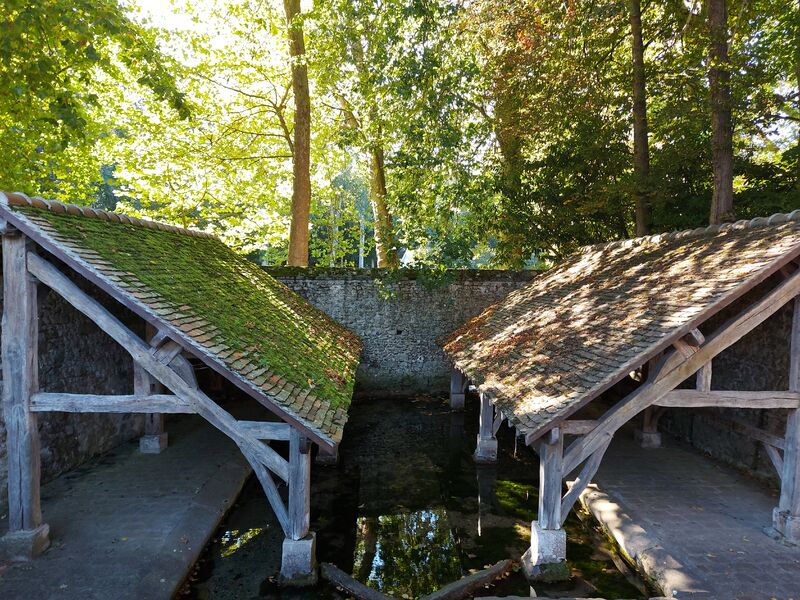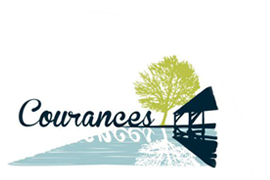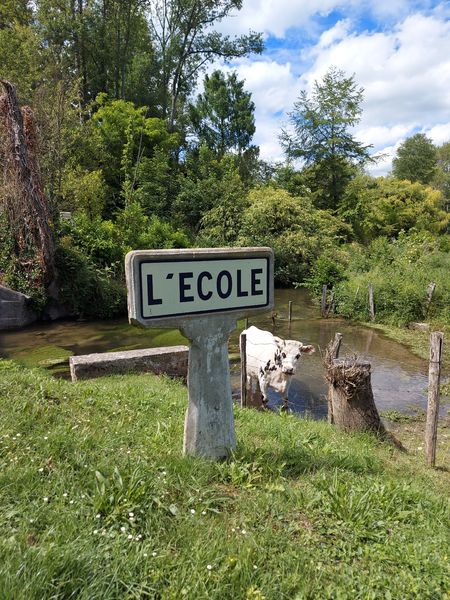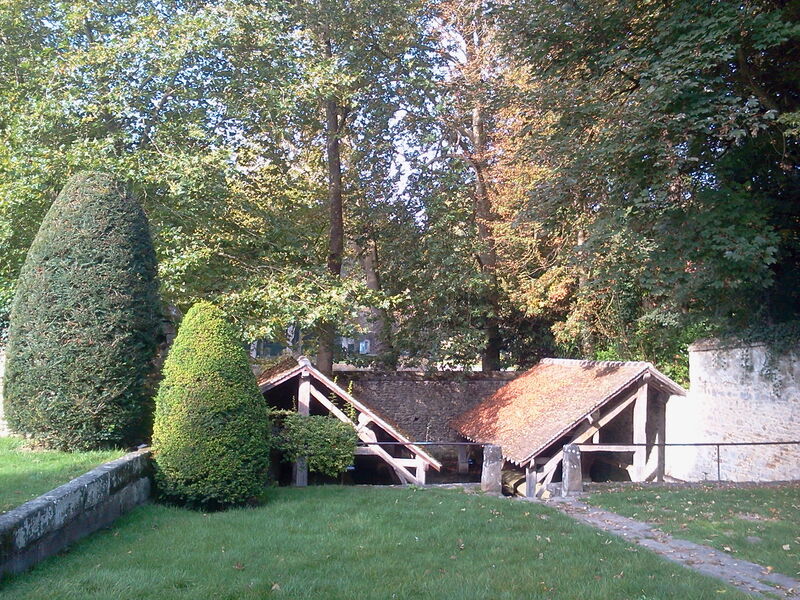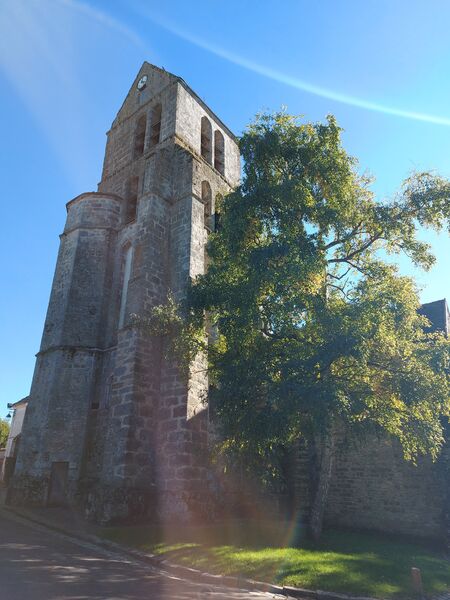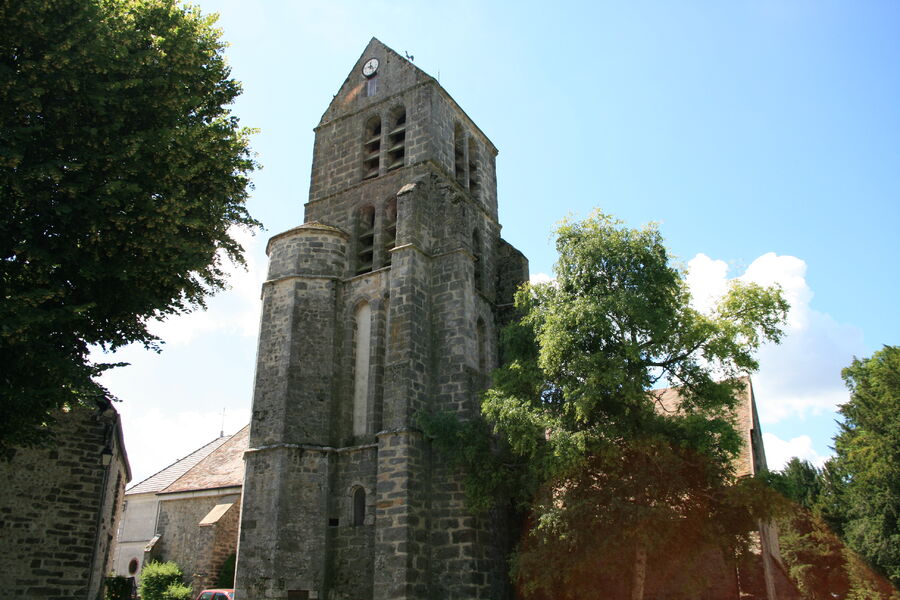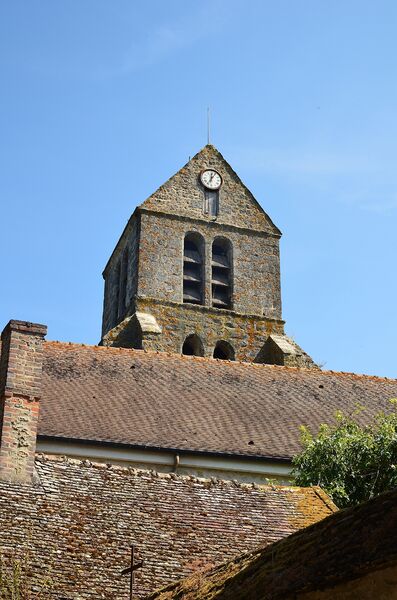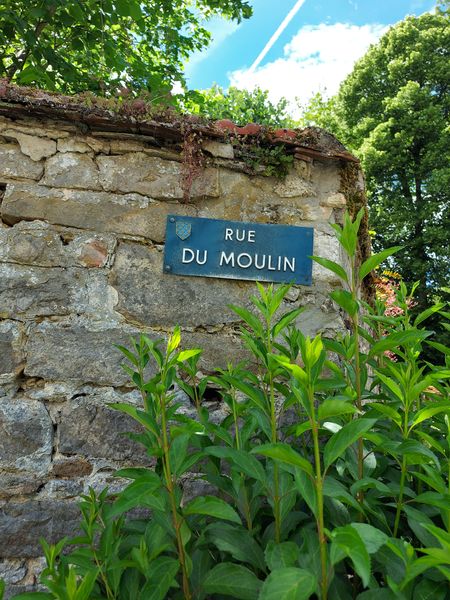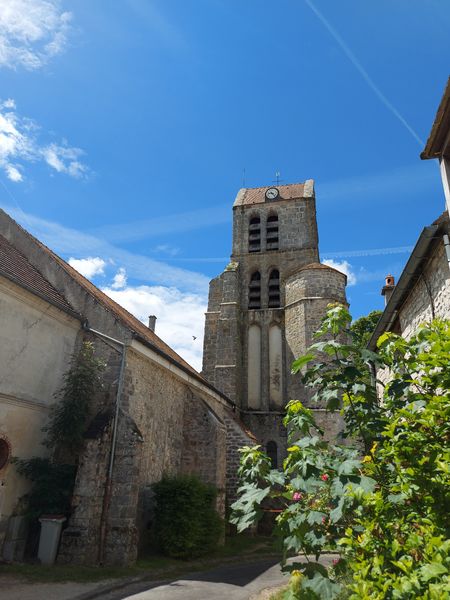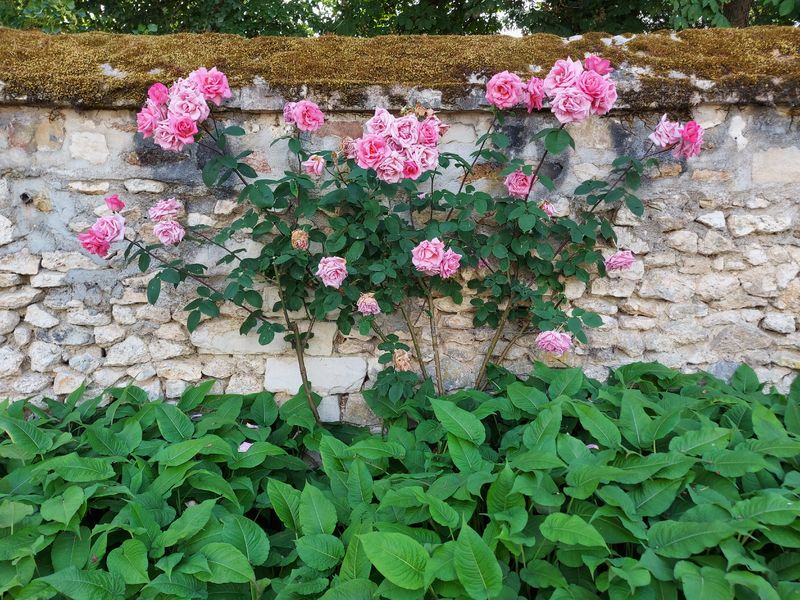Courances
Courances
Patrimoine culturel
The charming village of Cournaces is located along the École Valley and has a very interesting patrimony. Its castle has some fabulous gardens that are known worldwide. The banks of the École River in Courances are classified as Espace Naturel Sensible..
-------------
HISTORY
The history of Courances is obviously linked to its castle’s history and to the numerous lords who reigned of the village. Its toponymy is quite unclear but it could come from the numerous water springs in the village.
The first traces of the existence of a seigneury in Courances are dated from the 12th and 13th centuries, they are noted in several document from that time, but are mostly indecipherable The first lord that is known is Guillaume de Milly, under the reign of King Louis VI (1081-1137). Then, from 1255, the village was owned by Henri de Courances, a French marshal. The family de Courances was quite famous at the time and reigned until the middle of the 14th century when the last descendant died. Also, two properties coexisted in the Courances’ parish : Cousancia and Escorcy.
During the Hundred Years War, Courances was attacked, like a lot of villages surrounding. Some buildings and mills were destroyed by the Englishmen. Joan of Arc even stayed in Courances before her route to Sully-sur-Loire.
The seigneury had different owners and lords throughout the years. A lot of highly placed dignitaries of the French court owned Courances. They were knights, equerries, clerks or lawyers.
It is in nearly 1550 that Cosme Clausse, the secretary of State of King Henri II, purchased the seigneury of Courances and its castle. The seigneury grew a lot thanks to him and his descendants. They bought lands surrounding them. This powerful family was very close to the kings of France.
In 1570, King Charles IX gave the right to the lord of Courances to hold a weekly market and two yearly fairs.
In 1622, Claude Gallard bought the seigneury of Courances from the Clausse family. The estate and the castle are already important with a lot of furniture. However, he is the one who modified the castle as seen nowadays and also added a chapel. His descendants also did some work on the castle. The village, the castle and its garden are famous, so walkers were crossing paths with crowned heads.
During the French Revolution, the family de Nicolay was reigning on Courances and their property was taken away. Mister de Nicolay died on the scaffold. His wife hid in Saint-Germain-en-Laye for years. Then, when she was back in Courances, she was horrified to see her castle and village being dilapidated and scruffy. She spent the rest of her life repairing everything she could and rebuilding what was destroyed.
The baron de Haber bought the estate, then the de Ganay family bought it. They are still today the owners of the castle.
In 1832, Courances was the victim of the cholera epidemic. For a few months, the cholera was in the École Valley. Dozens of persons died in the village and some families were devastated. In 1871, the village was also a victim of the Franco-Prussian war as some battles took place in the area.
During World War I, the castle was used as an auxiliary hospital to heal injured soldiers. Then, during World War II, the village was occupied by Germans who stole the castle. After that during the Liberation, the castle was used by the Allies as headquarters. Some very famous people such as General Einsenhower and General Montgomery stayed in Courances.
In 1970, the very famous dressmaker Nina Ricci was buried in the cemetery of Courances. She spent the last years of her life living in a small castle in Courances.
-------------
HERITAGE
The Church of Saint-Etienne
In the village center of Courances, the nice church is standing, close to the castle. It was built during the 12th century. Throughout the centuries, it was expanded and renovated. The main reason for that is because the church has some stability problems. Its bell tower is fortified and was built during the 16th century. Its nave is from the 17th century.
Inside the church, the decoration is newer and is dating from the 19th century following the decision of the lords of Courances. The church was classified as part of the Monuments Historiques in 1981.
The particularity of the church of Courances is that it possesses a polygonal tower connected to the bell tower. This polygonal tower is hiding stairs. Also, the whole church has a fortified style.
Several funeral stones can be seen in the church such as some lords of Courances. However, the most remarkable one is the tombstone of Jehan Monsalt, a knight who fought and fearlessly died during the Hundred Years War.
++++
The Wash-House
This beautiful wash-house is located near the town hall. It was built during the 18th century. The particularity of this wash-house is its two roofs and the pillars of the timber framework which are standing in the water.
++++
The Courances Estate
After the Hundred Years War, the Lapite family bought the seigneury of Courances. Then, during the Renaissance, the region was loved by nobles from King François 1st court. He was the one who made Fontainebleau fashionable again, so people were doing like him.
When Cosme Clausse bought the seigneury of Courances in 1522, it was only a simple manor house without a garden. He did some work to create the magnificent garden he was dreaming of and also created numerous hydraulic developments such as the Grand Canal.
The most important work was done between 1622 and 1630 by Claude 1st Gallard. The oldest parts of the castle we can still see today are from this period. When it was bought in 1872 by Samuel de Haber, some double stairs and some typical red bricks were both inspired by the castle of Fontainebleau.
During World War I, the castle was used as an auxiliary hospital for injured soldiers. Then, it was occupied by Germans during World War II. It was used as headquarters by General Montgomery once the American Army freed the village. The pool table in the castle is the biggest legacy from this period.
The castle has been owned by the de Ganay family for several generations now. The family still lives in the castle. People can visit a small part of the castle by reserving a guided tour. The castle has been classified as part of the Monuments Historiques since 1983.
The castle is not the only one which changed a lot throughout the centuries. The park of the estate also changed a lot. It is mainly a water garden from the Renaissance. In the garden you can see different styles side by side : a French garden from the 17th century, a French garden for the 19th century, a Japanese garden,... The park is classified as part of the prestigious label of Jardin Remarquable.
Since 2013, a vegetable garden, which is organic certified, has been selling different fruits, vegetables and plants. They are also used in the estate’s restaurant and in the shop “boutique du Jardin”. The vegetable garden also provides fruits, vegetables and plants to important chefs and restaurants.
++++
The Watercress’ Production du Moulin du Ruisseau
The watercress’ production was once obviously very important in the area. Courances is part of this tradition and the village still has some evidence of this past. Nowadays, the watercress’ production du Moulin du Ruisseau is selling watercress and different culinary preparations using it.
++++
SOURCE: Mairie de Courances, Domaine de Courances, Les Amis de Milly-en-Gâtinais et Environs, Parc Naturel Régional du Gâtinais Français
HISTORY
The history of Courances is obviously linked to its castle’s history and to the numerous lords who reigned of the village. Its toponymy is quite unclear but it could come from the numerous water springs in the village.
The first traces of the existence of a seigneury in Courances are dated from the 12th and 13th centuries, they are noted in several document from that time, but are mostly indecipherable The first lord that is known is Guillaume de Milly, under the reign of King Louis VI (1081-1137). Then, from 1255, the village was owned by Henri de Courances, a French marshal. The family de Courances was quite famous at the time and reigned until the middle of the 14th century when the last descendant died. Also, two properties coexisted in the Courances’ parish : Cousancia and Escorcy.
During the Hundred Years War, Courances was attacked, like a lot of villages surrounding. Some buildings and mills were destroyed by the Englishmen. Joan of Arc even stayed in Courances before her route to Sully-sur-Loire.
The seigneury had different owners and lords throughout the years. A lot of highly placed dignitaries of the French court owned Courances. They were knights, equerries, clerks or lawyers.
It is in nearly 1550 that Cosme Clausse, the secretary of State of King Henri II, purchased the seigneury of Courances and its castle. The seigneury grew a lot thanks to him and his descendants. They bought lands surrounding them. This powerful family was very close to the kings of France.
In 1570, King Charles IX gave the right to the lord of Courances to hold a weekly market and two yearly fairs.
In 1622, Claude Gallard bought the seigneury of Courances from the Clausse family. The estate and the castle are already important with a lot of furniture. However, he is the one who modified the castle as seen nowadays and also added a chapel. His descendants also did some work on the castle. The village, the castle and its garden are famous, so walkers were crossing paths with crowned heads.
During the French Revolution, the family de Nicolay was reigning on Courances and their property was taken away. Mister de Nicolay died on the scaffold. His wife hid in Saint-Germain-en-Laye for years. Then, when she was back in Courances, she was horrified to see her castle and village being dilapidated and scruffy. She spent the rest of her life repairing everything she could and rebuilding what was destroyed.
The baron de Haber bought the estate, then the de Ganay family bought it. They are still today the owners of the castle.
In 1832, Courances was the victim of the cholera epidemic. For a few months, the cholera was in the École Valley. Dozens of persons died in the village and some families were devastated. In 1871, the village was also a victim of the Franco-Prussian war as some battles took place in the area.
During World War I, the castle was used as an auxiliary hospital to heal injured soldiers. Then, during World War II, the village was occupied by Germans who stole the castle. After that during the Liberation, the castle was used by the Allies as headquarters. Some very famous people such as General Einsenhower and General Montgomery stayed in Courances.
In 1970, the very famous dressmaker Nina Ricci was buried in the cemetery of Courances. She spent the last years of her life living in a small castle in Courances.
-------------
HERITAGE
The Church of Saint-Etienne
In the village center of Courances, the nice church is standing, close to the castle. It was built during the 12th century. Throughout the centuries, it was expanded and renovated. The main reason for that is because the church has some stability problems. Its bell tower is fortified and was built during the 16th century. Its nave is from the 17th century.
Inside the church, the decoration is newer and is dating from the 19th century following the decision of the lords of Courances. The church was classified as part of the Monuments Historiques in 1981.
The particularity of the church of Courances is that it possesses a polygonal tower connected to the bell tower. This polygonal tower is hiding stairs. Also, the whole church has a fortified style.
Several funeral stones can be seen in the church such as some lords of Courances. However, the most remarkable one is the tombstone of Jehan Monsalt, a knight who fought and fearlessly died during the Hundred Years War.
++++
The Wash-House
This beautiful wash-house is located near the town hall. It was built during the 18th century. The particularity of this wash-house is its two roofs and the pillars of the timber framework which are standing in the water.
++++
The Courances Estate
After the Hundred Years War, the Lapite family bought the seigneury of Courances. Then, during the Renaissance, the region was loved by nobles from King François 1st court. He was the one who made Fontainebleau fashionable again, so people were doing like him.
When Cosme Clausse bought the seigneury of Courances in 1522, it was only a simple manor house without a garden. He did some work to create the magnificent garden he was dreaming of and also created numerous hydraulic developments such as the Grand Canal.
The most important work was done between 1622 and 1630 by Claude 1st Gallard. The oldest parts of the castle we can still see today are from this period. When it was bought in 1872 by Samuel de Haber, some double stairs and some typical red bricks were both inspired by the castle of Fontainebleau.
During World War I, the castle was used as an auxiliary hospital for injured soldiers. Then, it was occupied by Germans during World War II. It was used as headquarters by General Montgomery once the American Army freed the village. The pool table in the castle is the biggest legacy from this period.
The castle has been owned by the de Ganay family for several generations now. The family still lives in the castle. People can visit a small part of the castle by reserving a guided tour. The castle has been classified as part of the Monuments Historiques since 1983.
The castle is not the only one which changed a lot throughout the centuries. The park of the estate also changed a lot. It is mainly a water garden from the Renaissance. In the garden you can see different styles side by side : a French garden from the 17th century, a French garden for the 19th century, a Japanese garden,... The park is classified as part of the prestigious label of Jardin Remarquable.
Since 2013, a vegetable garden, which is organic certified, has been selling different fruits, vegetables and plants. They are also used in the estate’s restaurant and in the shop “boutique du Jardin”. The vegetable garden also provides fruits, vegetables and plants to important chefs and restaurants.
++++
The Watercress’ Production du Moulin du Ruisseau
The watercress’ production was once obviously very important in the area. Courances is part of this tradition and the village still has some evidence of this past. Nowadays, the watercress’ production du Moulin du Ruisseau is selling watercress and different culinary preparations using it.
++++
SOURCE: Mairie de Courances, Domaine de Courances, Les Amis de Milly-en-Gâtinais et Environs, Parc Naturel Régional du Gâtinais Français
Prestations, conforts et services
- French


